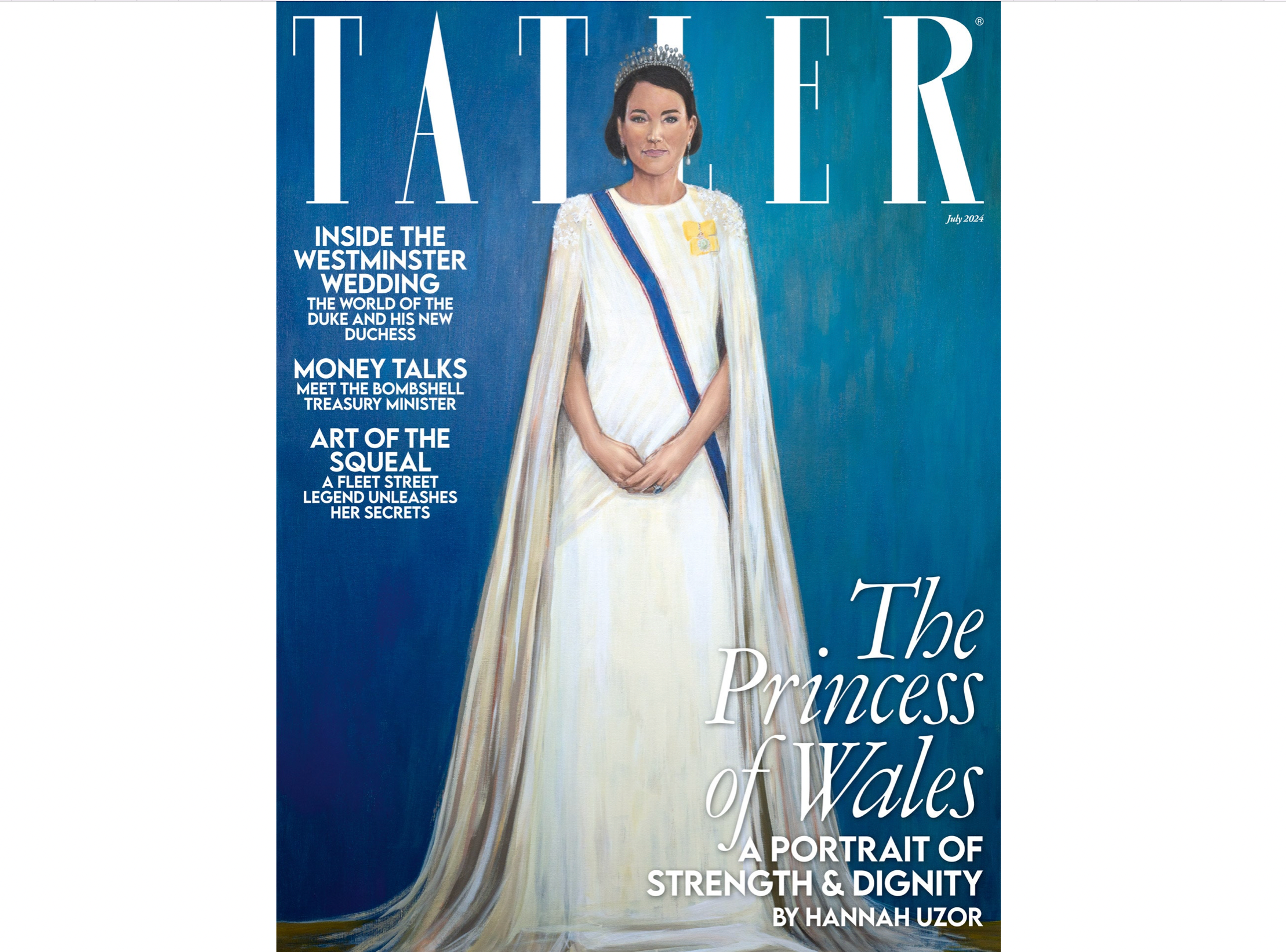Tatler magazine’s latest issue features a stunning painting of Kate Middleton, the Princess of Wales, on its cover, sparking widespread debate and criticism across social media and art circles. The artwork, intended to celebrate the royal’s elegance and poise, has instead ignited discussions on artistic interpretation, representation, and public perception of modern royalty.
The Controversial Cover
The painting, created by renowned British artist Paul Emsley, captures Kate Middleton in a regal pose, adorned in a classic ensemble that highlights her sophisticated style. However, the portrayal has not been universally well-received. Critics argue that the painting fails to capture the true essence of the Princess, presenting her in a manner that some describe as overly formal and lacking vitality.
Social Media Reactions
As soon as the cover was unveiled, social media platforms were flooded with comments. Critics on Twitter and Instagram voiced their dissatisfaction, with some calling the painting “lifeless” and “unflattering.” The hashtag #TatlerCover quickly began trending, as users shared their thoughts on the artwork. One Twitter user remarked, “Kate Middleton is vibrant and full of life, but this painting makes her look tired and old. Disappointing!” Another added, “Art is subjective, but this doesn’t do justice to the Princess of Wales’ dynamic personality.”
Artistic Interpretation and Defense
Despite the backlash, some art experts and enthusiasts have defended Emsley’s work, emphasizing the subjective nature of art. “Portraits are always a matter of personal interpretation,” said Dr. Sarah Morton, an art historian at the University of London. “While some may find the painting lacking, others might appreciate its subtlety and classical approach. It’s essential to consider the artist’s perspective and intention.”
Emsley himself responded to the criticism, explaining his artistic choices in an interview with The Guardian. “My goal was to capture a moment of quiet reflection, to show a different side of the Princess that is not often seen in public appearances,” he stated. “I understand that not everyone will connect with this portrayal, but that is the nature of art.”
Public Perception of Royal Portraits
The criticism of this particular painting echoes past controversies surrounding royal portraits. Historically, depictions of royalty have sparked debates about representation and public image. Similar reactions were seen with portraits of Queen Elizabeth II and Princess Diana, where public expectations often clashed with artistic renditions.
The Role of Modern Royalty in Art
This incident highlights the ongoing challenge of portraying modern royals in a way that resonates with contemporary audiences. As figures like Kate Middleton navigate their roles in the public eye, artists strive to balance tradition with modernity in their representations. The reception of such artworks often reflects broader societal attitudes towards the monarchy and its place in the 21st century.
Conclusion
While the painting of Kate Middleton on Tatler’s cover has faced significant criticism, it has also sparked meaningful discussions about art, representation, and the evolving image of modern royalty. As the conversation continues, it serves as a reminder of the powerful impact that art can have on public perception and the enduring fascination with the lives of the royal family.
For those interested in viewing the controversial cover and forming their own opinions, the latest issue of Tatler magazine is available now.





















